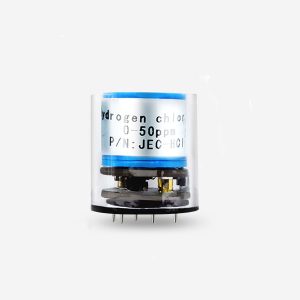In today's rapidly changing world, environmental pollution has become a significant concern. The adverse effects of pollutants on human health and the ecosystem have necessitated the development of effective monitoring technologies. Gas sensor innovations have emerged as a promising solution for real-time detection and analysis of various pollutants. This article explores the advancements in gas sensor technology and their applications in detecting pollutants, highlighting their potential to address environmental challenges.

- Understanding Gas Sensors: Gas sensors are electronic devices designed to detect and measure the concentration of specific gases within the surrounding environment. They operate based on different principles, including electrochemical, semiconductor, and optical detection methods. These sensors are capable of identifying a wide range of gases, such as carbon monoxide (CO), nitrogen dioxide (NO2), ozone (O3), and volatile organic compounds (VOCs).
- Real-Time Pollution Monitoring: Gas sensor innovations have revolutionized the field of pollution monitoring by enabling real-time data collection and analysis. Traditional methods often involve manual sampling and laboratory analysis, which are time-consuming and lack immediacy. Gas sensors provide continuous and instantaneous measurements, allowing for early detection and timely response to pollution events. This real-time monitoring capability is crucial for ensuring public health, industrial safety, and environmental protection.
- Applications of Gas Sensors: a. Air Quality Monitoring: Gas sensors play a vital role in monitoring outdoor and indoor air quality. They can detect harmful gases emitted from industrial activities, traffic congestion, and domestic sources. By continuously monitoring pollutant levels, gas sensors contribute to the assessment of air quality indexes, helping authorities develop effective pollution mitigation strategies.
b. Industrial Emissions Control: Industries often produce hazardous gases as byproducts of manufacturing processes. Gas sensors enable real-time monitoring of these emissions, facilitating the implementation of pollution control measures. Early detection of gas leaks or abnormal emission levels helps minimize the risk of accidents and ensures compliance with environmental regulations.
c. Environmental Sensing Networks: Gas sensors are used in the development of environmental sensing networks to establish a comprehensive pollution monitoring system. These networks consist of multiple gas sensor nodes deployed across different locations, providing extensive coverage for pollution detection. The collected data is transmitted wirelessly to a central database, allowing for real-time analysis and decision-making.
d. Indoor Air Quality Management: Gas sensors are invaluable in maintaining healthy indoor environments. They can detect gases released from building materials, furniture, cleaning products, and cooking activities, ensuring proper ventilation and reducing the risk of indoor air pollution-related health issues.
- Advancements in Gas Sensor Technology: a. Miniaturization and Portability: Recent advancements have led to the miniaturization and portability of gas sensors. This allows for their integration into various devices such as smartphones, wearables, and IoT-enabled systems, enabling personal exposure monitoring and enhancing accessibility.
b. Selectivity and Sensitivity: Gas sensors now exhibit improved selectivity and sensitivity, enabling accurate identification and quantification of specific gases even at low concentrations. This enhances their reliability in detecting pollutants accurately and ensures the integrity of collected data.
c. Calibration and Maintenance: Modern gas sensors often feature self-calibration capabilities, reducing the need for frequent manual calibration. Additionally, advancements in sensor materials and coatings have enhanced durability and reduced the maintenance requirements of gas sensor devices.
- Future Directions and Challenges: Gas sensor technology continues to evolve, driven by the increasing demand for reliable pollution monitoring solutions. Future developments may focus on improving sensor response time, expanding the range of detectable gases, and enhancing the integration with data analytics and AI technologies. However, challenges such as cross-sensitivity, long-term stability, and cost-effectiveness need to be addressed to ensure widespread adoption and scalability of gas sensor innovations.
-

electrochemical gas sensors
Conclusion: Gas sensor innovations have significantly advanced the field of real-time pollution monitoring. By providing accurate, continuous, and instantaneous measurements, these sensors enable early detection of pollutants, leading to effective mitigation strategies. The applications of gas sensors in air quality monitoring, industrial emissions control, environmental sensing networks, and indoor air quality management demonstrate their transformative potential. As technology continues to progress, gas sensors will play a crucial role in safeguarding human health, preserving the environment, and building sustainable communities.
 : +86 155 8830 2704
: +86 155 8830 2704 : jxdziot@gmail.com
: jxdziot@gmail.com
